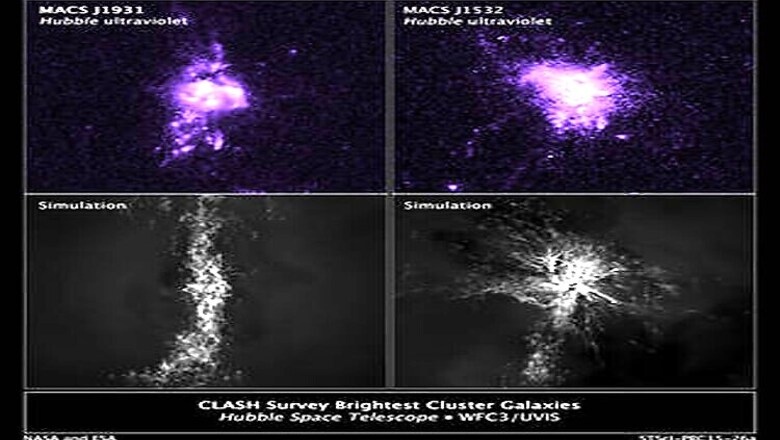
views
Washington: Astronomers, using NASA's Hubble Space Telescope, have uncovered a unique process for how the universe's largest elliptical galaxies continue making stars long after their peak years of star birth.
Hubble's exquisite high resolution and ultraviolet-light sensitivity allowed the astronomers to see brilliant knots of hot, blue stars forming along the jets of active black holes found in the centres of giant elliptical galaxies.
Combining Hubble data with observations from a suite of ground-based and space telescopes, two independent teams found that that the black hole, jets, and newborn stars are all parts of a self-regulating cycle.
High-energy jets shooting from the black hole heat a halo of surrounding gas, controlling the rate at which the gas cools and falls into the galaxy.
"Think of the gas surrounding a galaxy as an atmosphere," said the lead of the first study, Megan Donahue of Michigan State University.
"That atmosphere can contain material in different states, just like our own atmosphere has gas, clouds, and rain. What we are seeing is a process like a thunderstorm," said Donahue.
"As the jets propel gas outward from the centre of the galaxy, some of that gas cools and precipitates into cold clumps that fall back toward the galaxy's centre like raindrops," Donahue said.
"The 'raindrops' eventually cool enough to become star-forming clouds of cold molecular gas, and the unique far ultraviolet capabilities of Hubble allowed us to directly observe these 'showers' of star formation," said the lead of the second study, Grant Tremblay of Yale University.
"We know that these showers are linked to the jets because they're found in filaments and tendrils that wrap around the jets or hug the edges of giant bubbles that the jets have inflated," said Tremblay.
"And they end up making a swirling 'puddle' of star-forming gas around the central black hole," he said. But what should be a monsoon of raining gas is reduced to a mere drizzle by the black hole.
While some outwardly flowing gas will cool, the black hole heats the rest of the gas around a galaxy, which prevents the whole gaseous envelope from cooling more quickly.
The entire cycle is a self-regulating feedback mechanism, like the thermostat on a house's heating and cooling system, because the "puddle" of gas around the black hole provides the fuel that powers the jets.
If too much cooling happens, the jets become more powerful and add more heat. And if the jets add too much heat, they reduce their fuel supply and eventually weaken. This discovery explains the mystery of why many elliptical galaxies in the present-day universe are not ablaze with a higher rate of star birth.


















Comments
0 comment